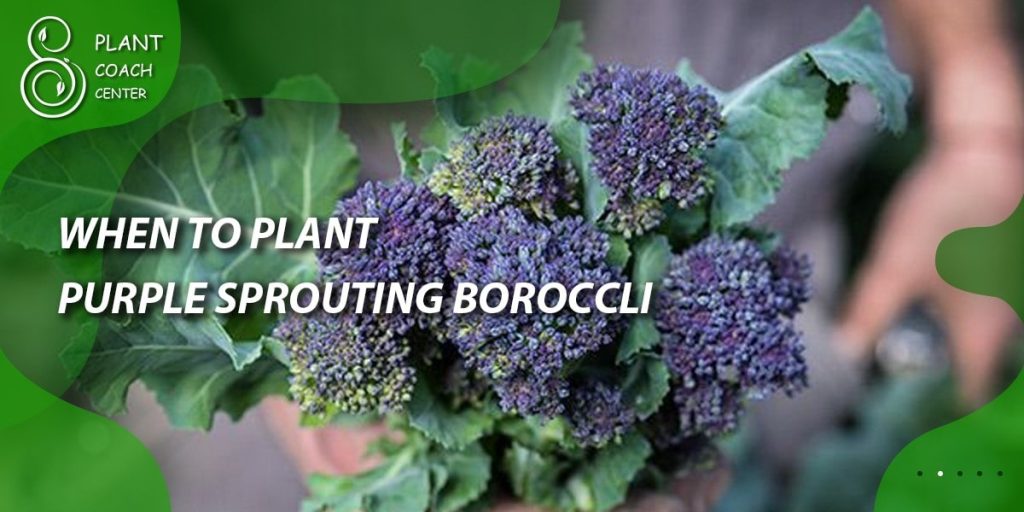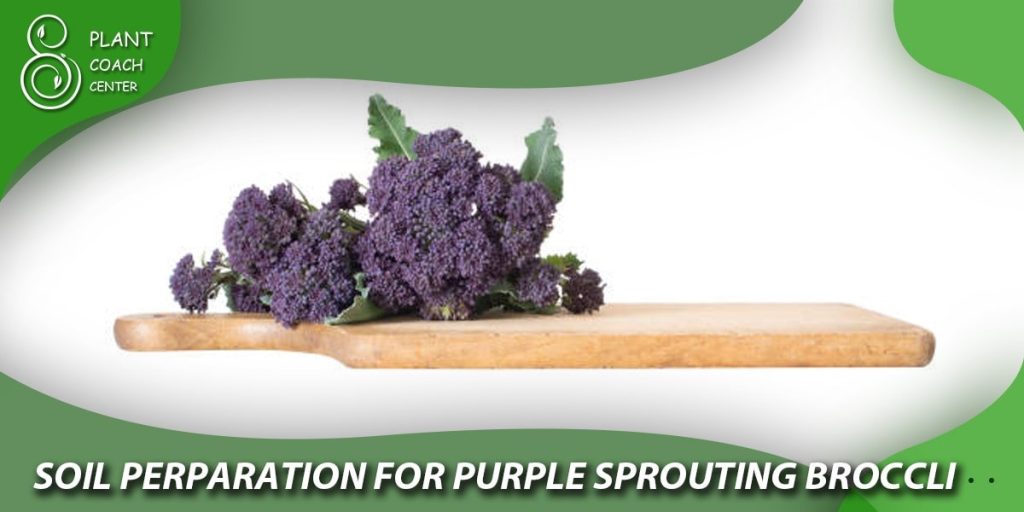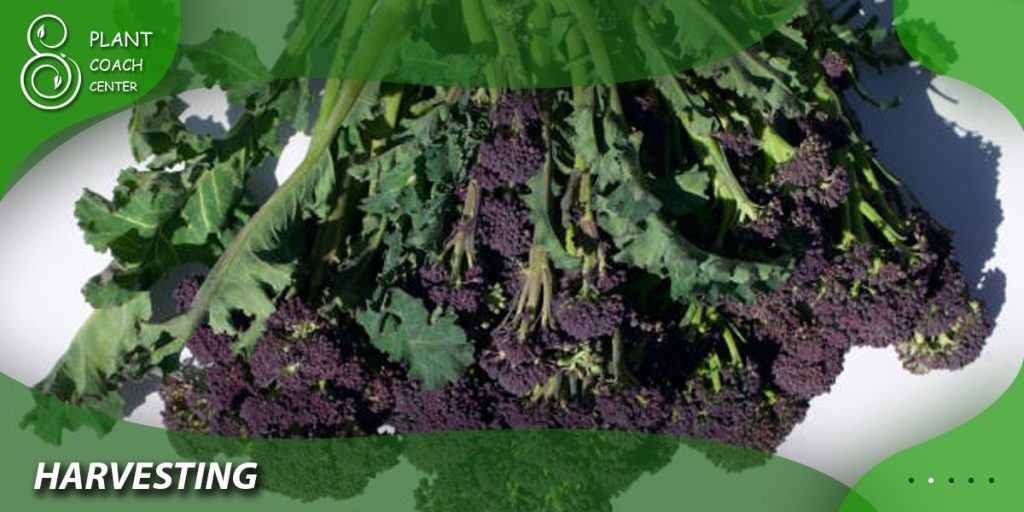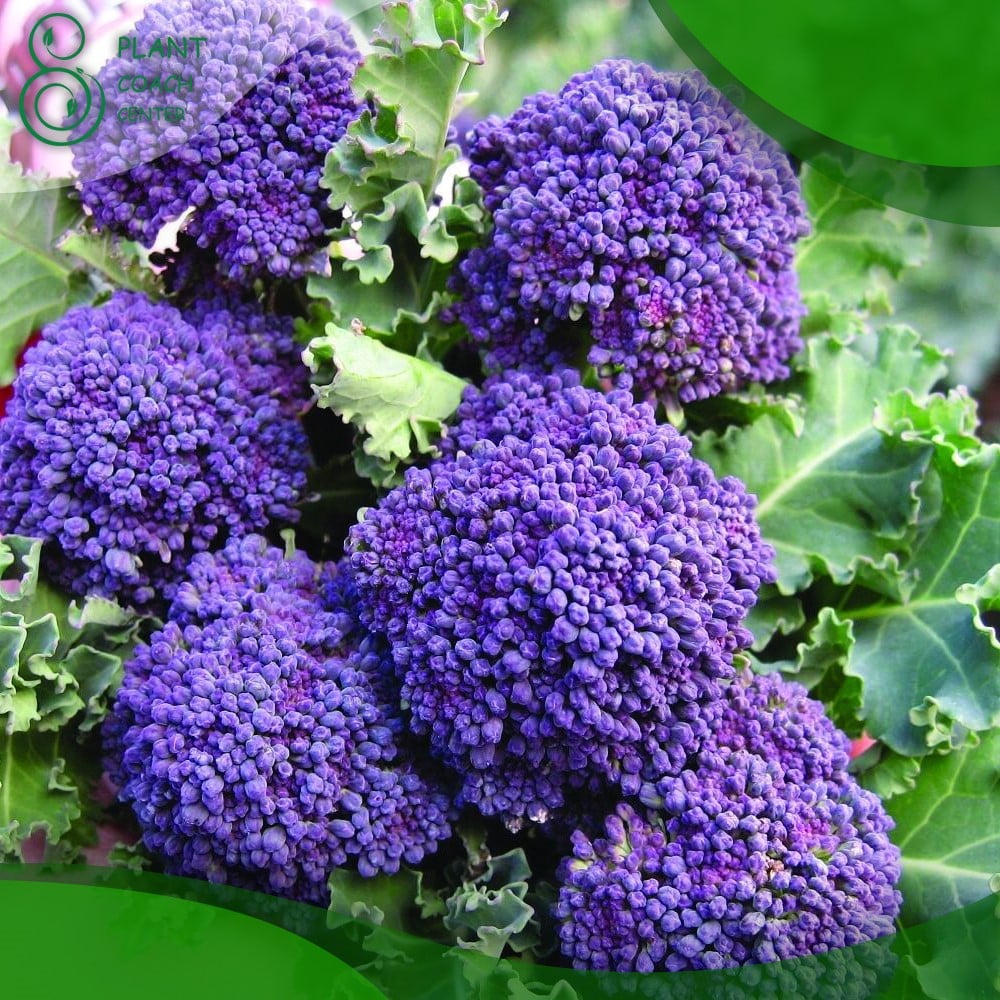When to Plant Purple Sprouting Broccoli
Purple sprouting broccoli is a nutritious and versatile vegetable that has gained popularity among gardeners and food enthusiasts. Its vibrant purple florets and tender stalks make it a delightful addition to any dish. In this comprehensive guide, we will explore the various aspects of growing purple sprouting broccoli, focusing specifically on the optimal timing for planting.
Whether you’re a seasoned gardener or a beginner, this article will provide you with the knowledge and tips you need to successfully cultivate this delicious brassica. For more gardening resources and expert advice, visit [PlantCoachCenter.com] (https://www.plantcoachcenter.com).

Understanding Purple Sprouting Broccoli
Purple sprouting broccoli, scientifically known as Brassica oleracea var. italica, is a member of the brassica family. It shares characteristics with other broccoli varieties but has its distinct features. Here’s an overview of its description and characteristics:
– Description:
– Purple sprouting broccoli features long stalks with small, loose purple florets.
– The plant can grow up to 3 feet tall and requires adequate spacing for healthy development.
– It is a biennial plant, meaning it completes its life cycle over two years.
– Varieties of Purple Sprouting Broccoli:
– Early Purple Sprouting Broccoli: This variety matures early and is ideal for growers in regions with shorter growing seasons.
– Late Purple Sprouting Broccoli: As the name suggests, this variety matures later, providing a bountiful harvest during the spring.
Purple sprouting broccoli is not only a visually appealing vegetable but also a nutritional powerhouse. It is rich in vitamins, minerals, and antioxidants, making it a valuable addition to a healthy diet.
Benefits of Growing Purple Sprouting Broccoli
Growing purple sprouting broccoli in your garden offers several benefits, both for your health and the environment. Let’s delve into the advantages of cultivating this wonderful vegetable:
– Health Benefits of Consuming Purple Sprouting Broccoli:
– Abundance of Nutrients: Purple sprouting broccoli is packed with vitamins A, C, and K, as well as fiber and folate.
– Antioxidant Powerhouse: It contains powerful antioxidants that help fight inflammation and oxidative stress in the body.
– Cancer-Fighting Properties: The presence of glucosinolates in purple sprouting broccoli has been linked to reducing the risk of certain cancers.
– Environmental Benefits of Growing Purple Sprouting Broccoli:
– Soil Improvement: Purple sprouting broccoli belongs to the brassica family, which helps break up compacted soil and adds organic matter.
– Crop Rotation: By including purple sprouting broccoli in your crop rotation plan, you can reduce the risk of soil-borne diseases and pests.
Understanding Purple Sprouting Broccoli

The Importance of Timing in Planting Purple Sprouting Broccoli
Timing plays a crucial role in the successful cultivation of purple sprouting broccoli. Planting at the right time ensures optimal growth, development, and a bountiful harvest. Let’s delve into the factors that influence the timing of planting this vegetable and understand the planting window.
Factors Influencing Planting Time:
Climate and Temperature: Purple sprouting broccoli thrives in cool weather conditions. It prefers temperatures between 55°F and 75°F (13°C – 24°C). Extreme heat or frost can hinder its growth and affect the quality of the harvest.
Growing Zone: Understanding your specific growing zone helps determine the appropriate planting time for purple sprouting broccoli. Consult the USDA Plant Hardiness Zone map or a local gardening expert to identify the growing zone in your area.
Understanding the Planting Window:
The planting window for purple sprouting broccoli varies depending on the climate and growing zone. Generally, it can be divided into the following seasons:
Spring Planting of Purple Sprouting Broccoli:
– Advantages and Considerations:
– Spring planting allows for early harvest of purple sprouting broccoli.
– It requires careful attention to temperature fluctuations and potential frost.
– Preparing the Soil and Seedlings for Spring Planting:
– Start seeds indoors 6-8 weeks before the last expected frost date.
– Harden off the seedlings by gradually exposing them to outdoor conditions.
– Prepare the soil by adding organic matter and ensuring proper drainage.
Summer Planting of Purple Sprouting Broccoli:
– Advantages and Challenges:
– Summer planting can provide a fall harvest, extending the growing season.
– High temperatures may pose challenges, such as bolting and reduced yields.
– Managing Heat Stress and Watering Requirements:
– Provide ample shade and mulch to regulate soil temperature.
– Water deeply and regularly to prevent drought stress.
Fall Planting of Purple Sprouting Broccoli:
– Advantages and Considerations:
– Fall planting allows for a winter or early spring harvest.
– Protecting plants from frost and cold temperatures is crucial.
– Protecting Plants from Frost and Cold Temperatures:
– Monitor weather forecasts for frost events and cover plants with row covers or cloths.
– Consider using cold frames or tunnels to provide additional protection.
Winter Planting of Purple Sprouting Broccoli:
– Advantages and Challenges:
– Winter planting can yield an early spring harvest when few other vegetables are available.
– Cold temperatures and potential snowfall require careful protection measures.
– Cold Protection Techniques for Winter Planting:
– Plant in raised beds or containers for better drainage and insulation.
– Use protective coverings like cold frames, cloches, or row covers to shield plants from harsh weather conditions.

Soil Preparation for Purple Sprouting Broccoli
To ensure the healthy growth of purple sprouting broccoli, proper soil preparation is crucial. The right soil composition and nutrient levels contribute to robust plants and abundant yields. Here’s what you need to know:
Soil Requirements and Composition:
– Well-Drained Soil: Purple sprouting broccoli prefers well-drained soil to prevent waterlogging, which can lead to root rot. Ensure your soil has good drainage by adding organic matter or using raised beds.
– pH Level: Maintain a slightly acidic to neutral soil pH between 6.0 and 7.0 for optimal growth. Test the soil pH using a kit available at garden centers and adjust it if necessary.
– Nutrient-Rich Soil: Purple sprouting broccoli thrives in fertile soil. Prior to planting, enrich the soil by incorporating compost or well-rotted manure to enhance its nutrient content.
Testing and Amending Soil pH and Nutrient Levels:
Soil pH Testing:
– Collect soil samples from various areas of your garden.
– Follow the instructions on the soil testing kit to obtain accurate pH readings.
– If the pH is too acidic, consider adding lime to raise it. For alkaline soil, sulfur or organic matter can help lower the pH.
Nutrient Testing:
– A comprehensive soil test can provide detailed information about nutrient deficiencies or imbalances.
– Follow the instructions provided with the soil testing kit or send the samples to a reputable soil testing laboratory.
– Based on the results, amend the soil with organic fertilizers or specific nutrients as recommended by the test report.
Propagation Methods for Purple Sprouting Broccoli:
Purple sprouting broccoli can be propagated through seeds or transplants. Here are the methods for each propagation technique:
Seed Starting Techniques:
– Start seeds indoors 6-8 weeks before the intended planting date.
– Fill seed trays or pots with seed-starting mix and moisten the soil.
– Sow the seeds at a depth of ¼ to ½ inch and cover them with a thin layer of soil.
– Place the trays in a warm location with sufficient light and maintain consistent moisture.
– Transplant the seedlings into individual pots once they develop their second set of true leaves.
Transplanting and Managing Seedlings:
– Harden off seedlings by gradually exposing them to outdoor conditions over a week.
– Choose a planting location with full sun or partial shade.
– Dig holes spaced 18-24 inches apart, ensuring they are deep enough to accommodate the root ball of the seedling.
– Gently remove the seedling from the pot, place it in the hole, and backfill with soil.
– Water thoroughly after transplanting to provide sufficient moisture and help the seedling establish.

Care and Maintenance of Purple Sprouting Broccoli Plants
Once your purple sprouting broccoli plants are in the ground, they require regular care and maintenance to ensure optimal growth and a bountiful harvest. Here are some essential tasks to keep in mind:
Watering:
– Provide consistent moisture to your purple sprouting broccoli plants, especially during dry periods.
– Water deeply, ensuring the soil is moist but not waterlogged.
– Avoid overhead watering to minimize the risk of fungal diseases. Instead, use drip irrigation or water at the base of the plants.
Mulching:
– Apply a layer of organic mulch around the base of the plants.
– Mulching helps retain soil moisture, suppresses weed growth, and regulates soil temperature.
– Use materials such as straw, shredded leaves, or compost as mulch.
Fertilization:
– Feed your purple sprouting broccoli plants with organic fertilizers to provide essential nutrients.
– Apply a balanced organic fertilizer, following the manufacturer’s instructions.
– Side-dress the plants with compost or well-rotted manure during the growing season to replenish soil nutrients.
Weed Control:
– Regularly remove weeds from the vicinity of your purple sprouting broccoli plants.
– Weeds compete with the plants for nutrients and water, potentially stunting their growth.
– Use hand-weeding or shallow cultivation to minimize disturbance to the plant’s roots.
Pest and Disease Management:
– Monitor your plants regularly for signs of pests or diseases.
– Common pests that may affect purple sprouting broccoli include aphids, cabbage worms, and slugs.
– Employ organic pest control methods such as handpicking, insecticidal soaps, or introducing beneficial insects.
– Preventive measures like crop rotation and proper spacing can help reduce the risk of diseases like clubroot and downy mildew.
Support and Staking:
– Purple sprouting broccoli plants can become top-heavy as they grow.
– Provide support by using stakes, cages, or trellises to prevent the plants from bending or breaking under their weight.
– Install the support structures early in the growth stage to avoid damaging the plant’s roots.
Harvesting Purple Sprouting Broccoli:
– Harvest purple sprouting broccoli when the florets are firm and tightly packed.
– Cut the central spear or main head, leaving at least 5 inches of the stem attached to encourage the growth of side shoots.
– Continuously monitor the plants and harvest side shoots regularly as they develop.
– Harvesting promptly ensures tender and flavorful florets.

Conclusion
growing purple sprouting broccoli can be a rewarding endeavor that provides you with a delicious and nutritious vegetable crop. By following proper care and maintenance practices, you can ensure the healthy growth of your plants and maximize your harvest. Here are the key takeaways:
Provide consistent moisture by watering deeply and avoiding overhead watering to prevent fungal diseases.
Apply organic mulch to retain soil moisture, suppress weeds, and regulate soil temperature.
Use organic fertilizers and side-dress with compost or well-rotted manure to replenish soil nutrients.
Regularly remove weeds to minimize competition for resources.
Monitor for pests and diseases and employ organic pest control methods if necessary.
Provide support and staking to prevent the plants from bending or breaking.
Harvest the central spear when the florets are firm and tight, leaving enough stem for side shoots to develop.
Overwinter plants by providing protection from frost and cold temperatures.
Implement crop rotation to maintain soil health and prevent pest and disease buildup.
Store and use harvested broccoli promptly for the best flavor and quality.
Remember to adapt these guidelines to your specific growing conditions and garden setup. With proper care, you can enjoy a continuous supply of purple sprouting broccoli, whether you’re using it in various culinary creations or saving seeds for future plantings. Happy gardening and bon appétit!







